Set in a tranquil locale of an approximate three bigha land in Chandpur district, Bangladesh, the vacation house designed by architect Mohaimeen Islam, accommodates modern requirements and aesthetics while adhering to traditional roots. The project exhibits a concise and simplistic design approach, conforming to the local context, climate, and site-specific conditions. Built out of local materials and techniques, this project, ‘Nazmir Bari’ hence emphasizes the essence of solidarity and contemplation through an uncluttered and bold architectural expression.
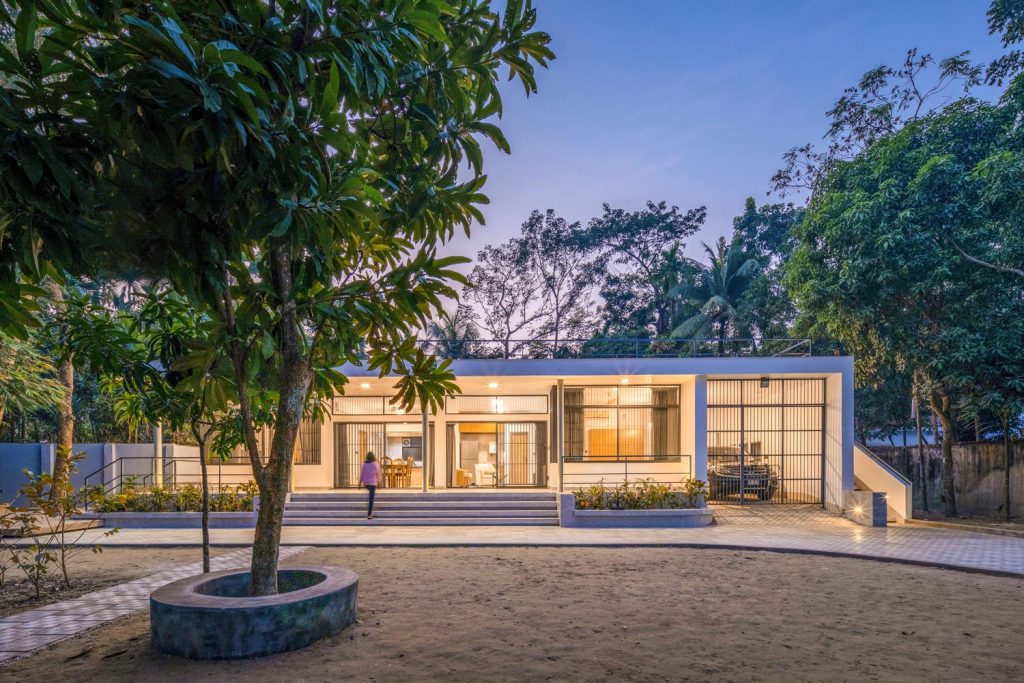
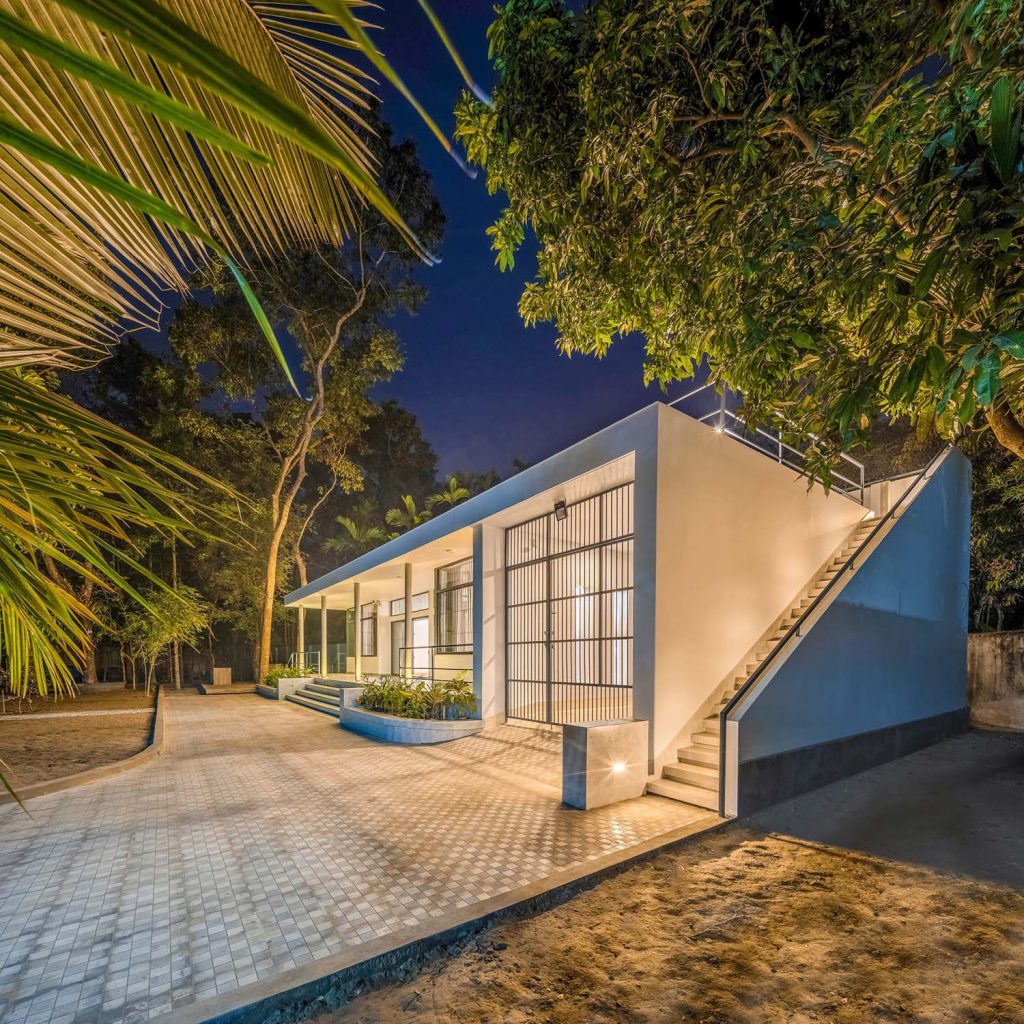
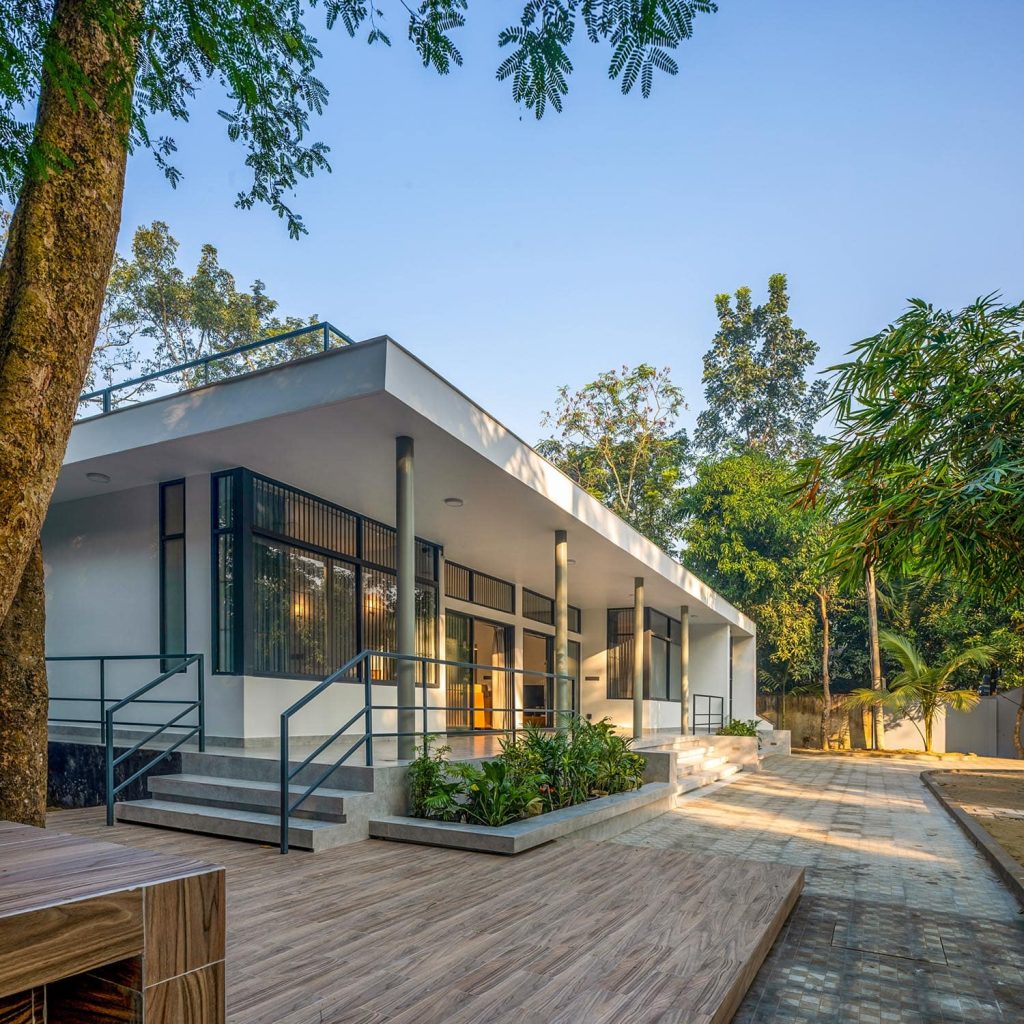
The three-bigha piece of land, of Nazmir Bari, has been inherited over generations; however, left abandoned for a long time, as the family migrated to the city. Experiencing several years of urban life, the client longed to return to his homeland, to enjoy his retirement, where he once lived and grew up.
“He wanted to replenish and rejuvenate the rural experience but without compromising modern-life facilities”
says architect Mohaimeen.
“With passing time, the village life and its rural setting have transformed, largely driven by the effect of urbanization. Such change asserts a premise to redefine the village house conception, that can be appropriate to the current time while retaining the values of rural architectural features”, continuing.
The site, in its origin, can be viewed as small forestry with a pond on the east and surrounded by a variety of trees, e.g. Rain, Shimul (Cotton), Karai and other fruit trees; some date 60 to 100 years old. Guided by such a natural setting, the house is purposefully positioned on the northern end which was originally vacant, leaving the dense tree zone unhampered. In this project, the design initiates with a sympathetic response to rural architecture, as the elongated eastern veranda overlooks the widespread front yard – the ‘uthan’. The veranda extends to the south, terminating on the outdoor deck, a place housing the drinking water deep-well, and occasionally used for cooking and eating. The uthan is also curated with a few seating platforms around the trees and a dedicated outdoor dining area. Traditionally, a uthan acts as the heart of rural architecture.
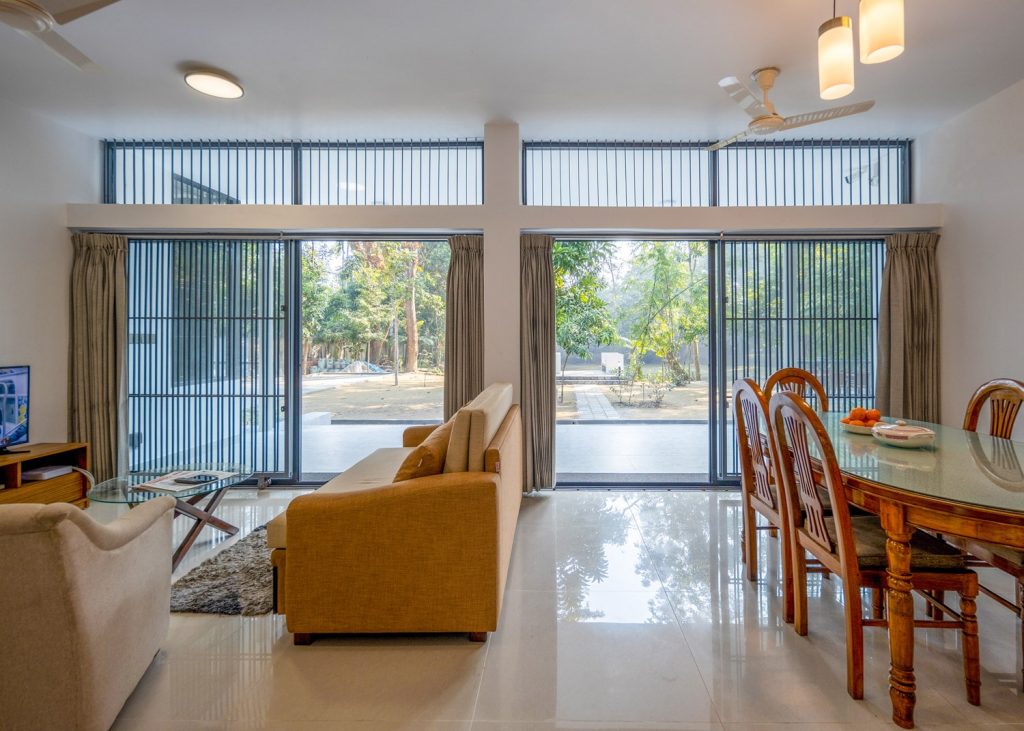
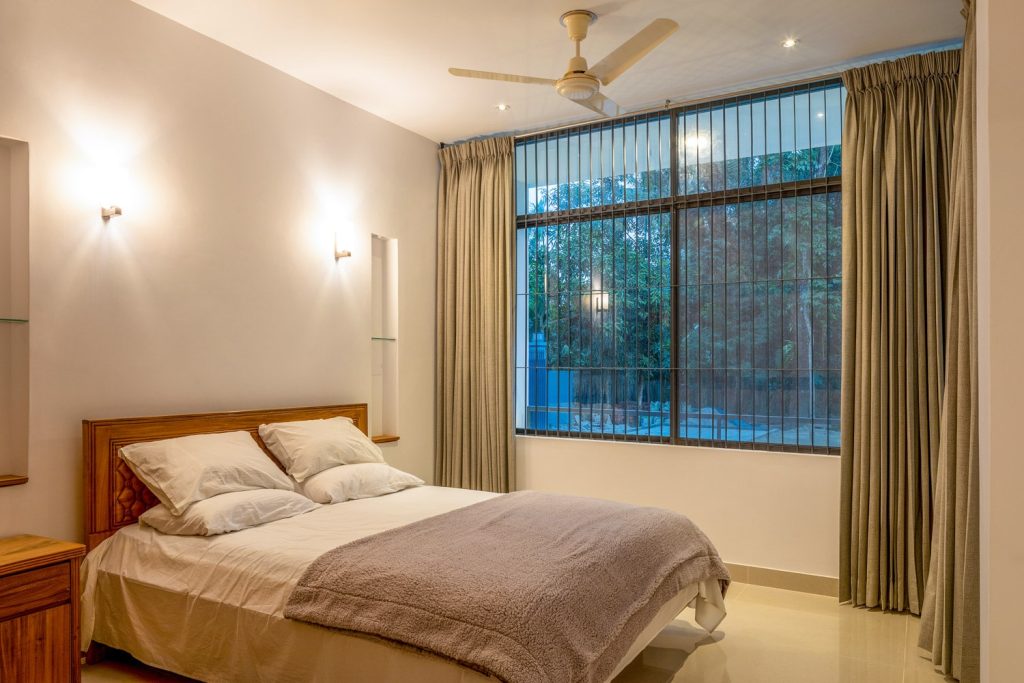
Whether celebrating seasonal changes or simply cooking huge family dinners – such activities are often performed around the uthan; which is no different in this project. However, the concept of the ‘roof’ feature is negotiated and deviates from the traditional pitch-roof characteristic. “To drain off the water, a roof does not need to be pitched; though it may offer an iconic semblance. We chose a flat roof structure, making the roof-top usable for gardening purposes, incorporating proper drainage system”, shares architect Mohaimeen.
The design adapts a simple linear configuration, separating the served and service functions.
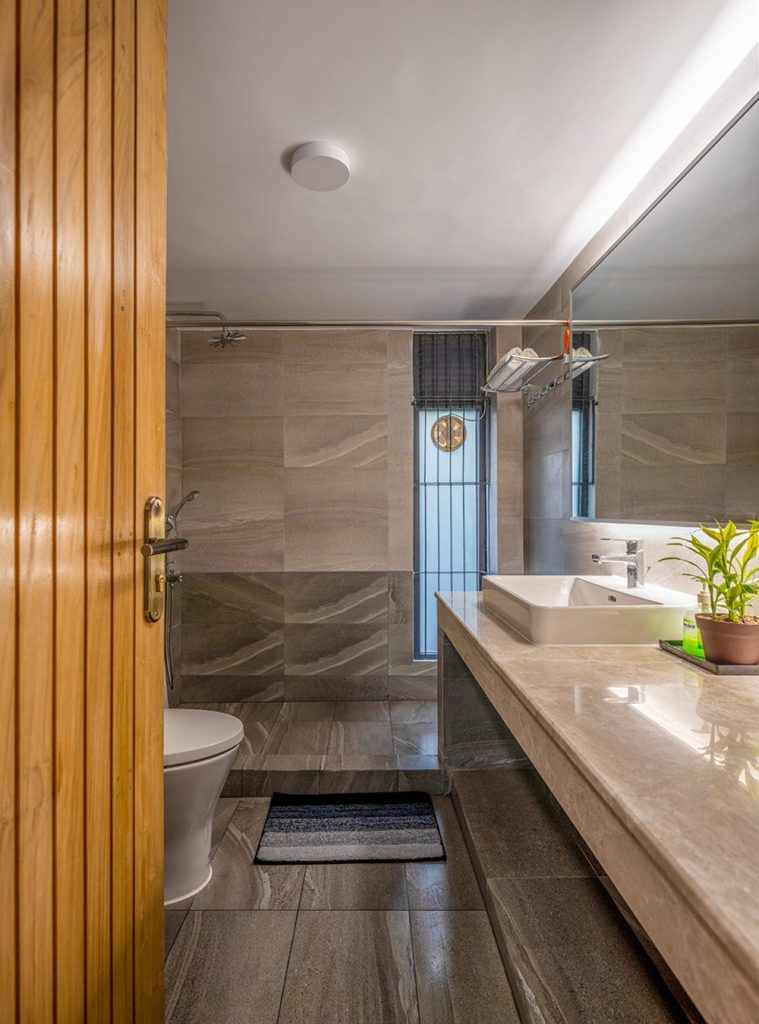
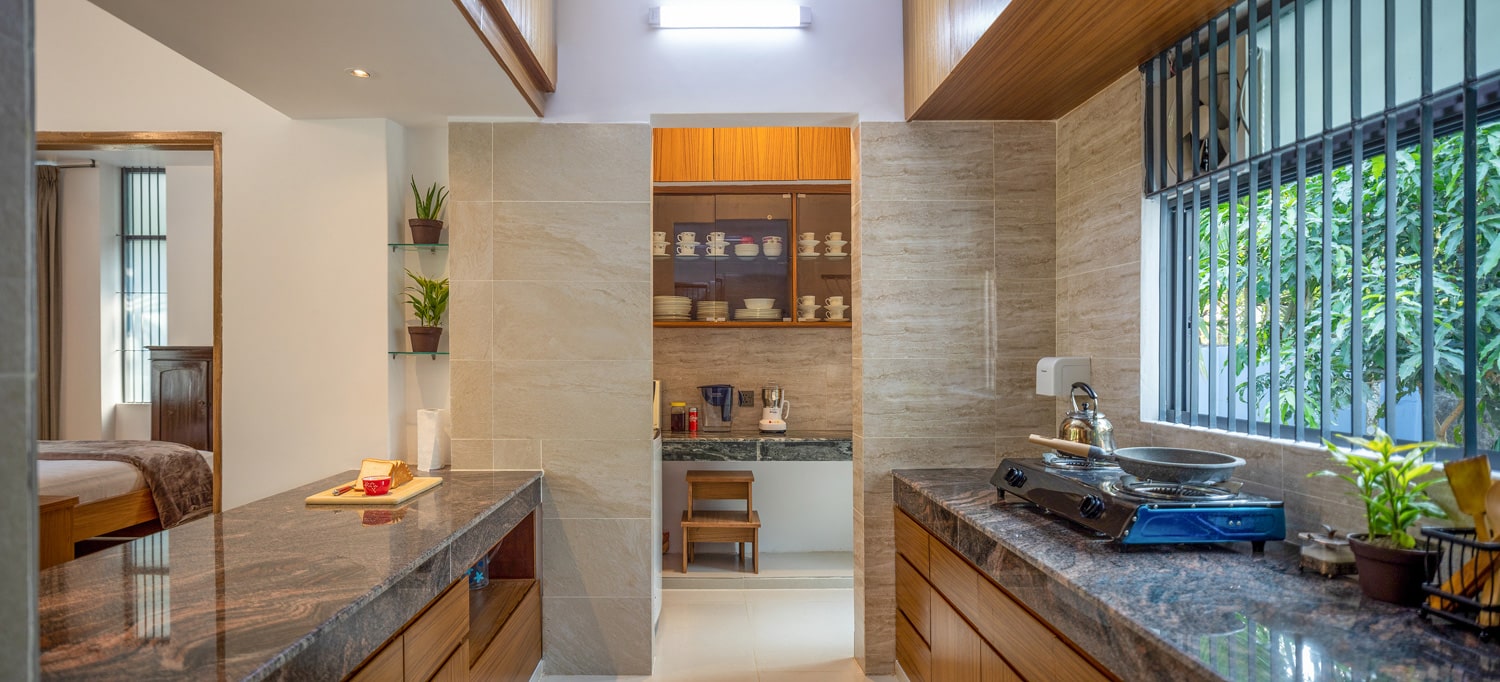
The service block, placed on the west, comprises an open kitchen, a store room, a kitchen-veranda and other utilities, all acting as a thermal buffer from the western heat. The served zone comprises two bedrooms and a shared living and dining space; overlooking the uthan and the ancestral pond through an enlarged opening, that links the front veranda as an entry. All rooms are bathed in eastern light and southeastern air; brought in by large glass panelled windows, allowing plenty of natural light and fresh air to spill into the interior and maximizing the view of the vibrant landscape. The built-form hence acts as a silent enclosure to experience the enchanting landscape on the forefront, from within.
The house is materialized through the use of the most common local materials and engages local workers and construction techniques. Common brick, concrete, and metal details make up the palette of materials that avoid eccentricities and guarantee noble ageing with low maintenance costs. Extravagancy in interior furnishing was massively avoided, as the designed architectural features and the layout itself support a rather simple, yet modern spatial presence. Nonetheless, the project attempts to address environmental sustainability in terms of minimum acquisition of building footprint, retaining the existing landscape, limiting project cost by using local builders and materials, and maximizing utilization of natural energy sources. Hence, through a careful and sensible design-build approach, Nazmir Bari exemplifies its presence as a reformed generation of contextual modernity, befitting within a rural setting of Bangladesh.
Architect Profile

Mohaimeen Islam is a practising Architect and currently working as a PhD Researcher at the Future Building Initiative, at Monash University, Australia. He is also an Assistant Professor (on leave) in the Department of Architecture of Bangladesh University of Engineering and Technology. After completing his Masters in Design & Make, from the AA School, London in 2016, Mohaimeen worked as an Associate Architect with Volumezero Ltd., and later served as a Senior Lecturer in the Department of Architecture of BRAC University. To date, he has executed quite a few design-build projects, through experimentation and the application of advanced techniques and innovative material practices.
Photo Courtesy: City Syntax




